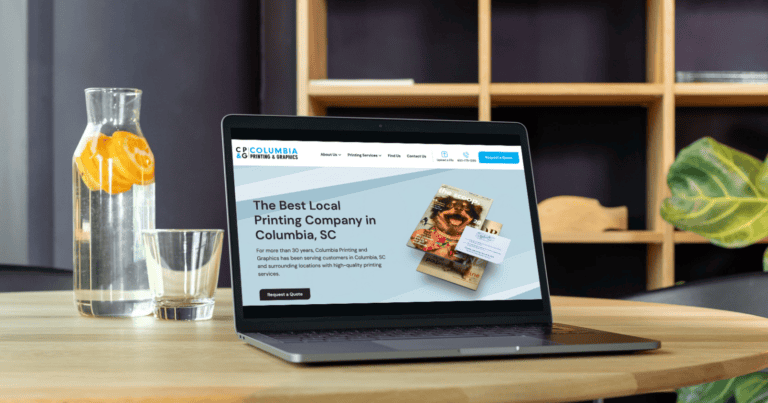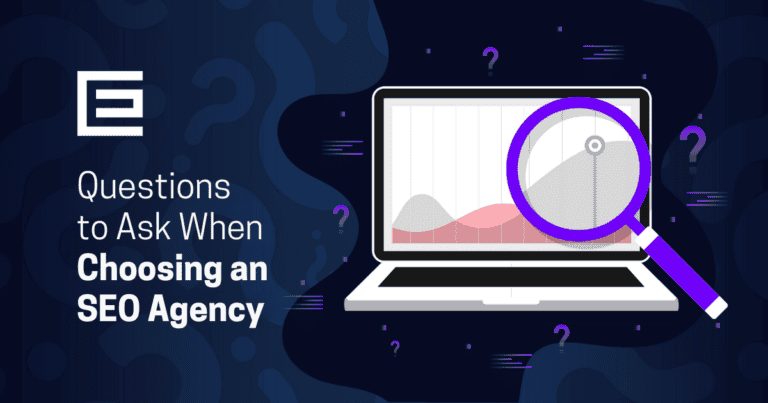Achieving and maintaining a high ranking in search engines is often surrounded by frustrations and misconceptions. One common frustration is the time it takes to see the results of SEO efforts. Unlike paid advertising, SEO is a long-term strategy. Changes made today might not reflect in search rankings for weeks or even months, leading to impatience and misplaced expectations. Additionally, there’s a prevalent misconception that SEO is a one-time task — a set-it-and-forget-it kind of deal. In reality, SEO is an ongoing process. Search engines constantly update their algorithms, and what works today may not work tomorrow, necessitating continuous optimization and adaptation.
Understanding these complexities is crucial for anyone looking to understand why their website is not ranking in Google or other search engines.
- 1Understanding Search Engine Indexing
- 2SEO Optimization Challenges
- 3Content Quality and Relevance
- 4Keyword Strategy
- 5Technical SEO Factors
- 6Backlinks and Online Authority
- 7Competition Analysis
- 8Google Penalties and Compliance
- 9Local SEO and Its Impact
- 10Monitoring and Improving Your SEO Strategy
- 11FAQs
Understanding Search Engine Indexing
Search engine indexing is a critical process that determines whether and how a website appears in search engine results. At its core, indexing involves a search engine’s bots, often referred to as crawlers or spiders, visiting a website, understanding its content, and storing this information in a vast database known as an index. When a user performs a search, the search engine sifts through this index to provide the most relevant results. The process begins with the discovery of a website, usually through links from other sites. The crawlers then analyze the site’s content, structure, and metadata, such as keywords and descriptions. They also assess factors like site layout, user experience, and mobile-friendliness. This information is then processed and stored in the index, ready to be retrieved when relevant queries are made.
However, there are several reasons why a website might not be indexed, which can significantly impact its visibility and traffic. One common issue is poor site structure and navigation. If a website is not well-organized or has broken links, crawlers might struggle to navigate it, leading to incomplete indexing. Another reason could be the use of outdated or non-compliant technologies, such as Flash, which are not easily readable by search engine bots.
Another significant factor is the presence of a robots.txt file that inadvertently blocks search engines from indexing the site. This file is meant to guide crawlers on which parts of the site to index and which to ignore, but if not configured correctly, it can prevent the entire site from being indexed. Additionally, websites with slow loading times or those that are frequently down when crawlers visit may also be skipped over during the indexing process.
Duplicate content is another issue that can hinder indexing. Search engines aim to provide unique and valuable content to users. If a website has multiple pages with substantially similar content, search engines might index only one version of the page, or worse, consider it spammy, affecting the site’s overall ranking potential.
Lastly, new websites or those with very few inbound links (backlinks) might also face delays in being indexed. Search engines prioritize websites that are deemed authoritative and trustworthy, often gauged by the number and quality of backlinks. A new or isolated website might take longer to appear on the radar of search engine crawlers.
Ensuring that a website is accessible, well-structured, and compliant with search engine guidelines is key to successful indexing and, by extension, better visibility in search results.
SEO Optimization Challenges
Search Engine Optimization (SEO) is a fundamental aspect of digital marketing, focusing on enhancing a website’s visibility in search engine results. It involves a set of practices designed to increase the quantity and quality of traffic to a website through organic search engine results. The impact of SEO on ranking is profound; it helps search engines understand and present content in a way that aligns with user queries. A well-optimized website not only ranks higher in search results but also offers a better user experience, leading to increased engagement, higher conversion rates, and improved credibility and trust among users.
However, navigating the complexities of SEO can be challenging, and common mistakes often hinder a website’s ranking potential. One of the most frequent errors is neglecting keyword research or misusing keywords. While keywords are crucial in aligning content with user searches, overusing them (known as keyword stuffing) or using irrelevant keywords can negatively impact a site’s ranking. Search engines prioritize content that naturally integrates relevant keywords and matches the user’s search intent.
Another common mistake is overlooking mobile optimization. With the increasing prevalence of mobile devices, search engines like Google have adopted mobile-first indexing, meaning they predominantly use the mobile version of content for indexing and ranking. Websites that are not mobile-friendly can suffer a significant drop in rankings.
Ignoring the importance of quality content is also a critical error. Search engines favor content that is original, valuable, and engaging. Thin content, duplicated across multiple pages, or content that adds little value to users, can lead to poor rankings. Additionally, failing to update content regularly can make a website appear stagnant to search engines, affecting its ranking.
Technical SEO aspects are often overlooked as well. Issues such as slow loading speeds, broken links, and unoptimized images can negatively impact user experience and, consequently, search engine rankings. Moreover, not paying attention to meta tags, such as title tags and meta descriptions, can result in missed opportunities to attract clicks in search results.
Lastly, neglecting off-page SEO factors, especially backlinks, is a common oversight. Backlinks from reputable and relevant sites are crucial in building a website’s authority and trustworthiness in the eyes of search engines. Poor backlink strategies, such as engaging in link schemes or having a large number of low-quality backlinks, can lead to penalties and ranking drops.
Avoiding common mistakes and adopting a holistic, well-informed SEO strategy is essential for achieving and maintaining high search engine rankings.
Content Quality and Relevance
Content quality and relevance play a pivotal role in search engine ranking, acting as a cornerstone of effective SEO strategies. Search engines like Google aim to provide users with the most relevant, informative, and valuable content in response to their queries. High-quality content that aligns with these goals is more likely to achieve higher rankings. This is because search engines use sophisticated algorithms to evaluate content based on factors such as uniqueness, informativeness, readability, and the value it offers to users. Content that meets these criteria is considered more authoritative and trustworthy, leading to better visibility in search results.
To assess and improve the relevance of your content, start by understanding your audience’s needs and search intent. Conduct thorough keyword research to identify the terms and phrases your target audience uses when searching for information, products, or services related to your business. This research will guide you in creating content that aligns with what your audience is looking for.
Once you have identified the key topics and keywords, focus on creating content that is not only keyword-rich but also informative and engaging. Your content should provide comprehensive answers to the questions your audience is asking or offer solutions to their problems. Use a natural and conversational tone, and avoid overusing keywords, which can lead to a negative user experience and potentially harm your rankings.
Another aspect of improving content relevance is ensuring it is up-to-date. Regularly review and update your content to reflect the latest information, trends, and industry developments. This practice demonstrates to search engines that your website is a current and reliable source of information.
Incorporating multimedia elements like images, videos, and infographics can also enhance the quality and relevance of your content. These elements can make your content more engaging and accessible, appealing to a broader audience and encouraging longer site visits, which search engines interpret as a sign of quality and relevance.
Moreover, the structure of your content is crucial. Use headings, subheadings, bullet points, and short paragraphs to make your content easy to read and navigate. A well-structured article or page not only improves user experience but also makes it easier for search engines to understand and index your content.
Finally, consider the user experience on your website. Ensure that your content is easily accessible, with a clear and intuitive navigation structure. A positive user experience can lead to higher engagement rates, longer dwell times, and lower bounce rates, all of which are favorable signals to search engines.
By focusing on creating valuable, informative, and user-friendly content, you can significantly improve your website’s visibility and appeal to both search engines and your target audience.
Need some assistance identifying the “SEO troublemakers” that are keeping your website from ranking on Google? Request a free website audit by our certified SEO experts.
Keyword Strategy
Keyword strategy is a critical component of SEO, serving as the foundation upon which many optimization efforts are built. Effective keyword research and implementation can significantly enhance a website’s visibility and ranking in search engine results. Keywords are the terms and phrases that users enter into search engines when looking for information, products, or services. By understanding and utilizing these keywords, websites can tailor their content to meet the specific needs and queries of their target audience. This alignment not only improves the chances of appearing in relevant searches but also helps in attracting more qualified traffic, which is more likely to convert into leads or sales.
However, there are common keyword-related issues that can hinder a website’s ranking. One of the primary challenges is the selection of overly broad or highly competitive keywords. While these keywords might have high search volumes, ranking for them can be extremely difficult, especially for newer or smaller websites. It’s often more effective to target long-tail keywords, which are more specific and less competitive, yet still highly relevant to the target audience.
Another issue is keyword stuffing, an outdated and penalized practice where keywords are excessively and unnaturally inserted into content. This approach not only leads to poor user experience but also triggers search engine penalties, as it’s seen as an attempt to manipulate rankings. Modern search algorithms are sophisticated enough to understand content context and user intent, making natural language and topic relevance more important than mere keyword density.
Failing to update and expand keyword strategies over time is also a common pitfall. As market trends, consumer behaviors, and search algorithms evolve, so should keyword strategies. Regularly reviewing and updating keywords ensures that content remains relevant and competitive in changing landscapes.
Neglecting local keywords can be a significant oversight for businesses serving specific geographic areas. Local SEO is crucial for attracting local customers, and incorporating location-specific keywords can greatly enhance visibility in local search results.
Lastly, ignoring the intent behind keywords can lead to misalignment between content and user expectations. Keywords can have different user intents, such as informational, navigational, transactional, or commercial. Understanding and catering to these intents in content creation ensures that the content meets the specific needs of users at different stages of their search or buying journey.
By carefully selecting relevant keywords, avoiding outdated practices like keyword stuffing, regularly updating the keyword list, focusing on local and intent-based keywords, and ensuring content aligns with user intent, websites can improve their search engine rankings and attract more targeted traffic.
Technical SEO Factors
Technical SEO refers to the process of optimizing the infrastructure of a website to enable search engines to crawl and index its content effectively. This aspect of SEO focuses on enhancing the technical elements of a website to improve its visibility in search engine results. Unlike other SEO practices that deal with content and website promotion, technical SEO is primarily concerned with the website’s backend structure and foundation. It includes optimizing site speed, mobile-friendliness, indexing, site architecture, structured data, and security. These elements are crucial for search engines to access, interpret, and rank a website’s content efficiently.
Several common technical issues can significantly impact a website’s ranking. One of the most critical factors is site speed. In today’s fast-paced digital environment, users expect quick loading times, and search engines prioritize websites that provide a speedy experience. Slow-loading websites not only frustrate users but also negatively affect search engine rankings. Optimizing images, leveraging browser caching, and minimizing the use of heavy scripts and plugins can enhance site speed.
Mobile-friendliness is another vital technical SEO factor. With the increasing prevalence of mobile devices, search engines like Google have adopted mobile-first indexing, meaning the mobile version of a website is primarily used for indexing and ranking. Websites that are not optimized for mobile devices may suffer in rankings. Ensuring a responsive design that adapts to various screen sizes and provides a seamless user experience on mobile is essential.
Proper indexing is crucial for search engines to read and understand the content of a website. Technical issues like incorrect use of the robots.txt file or meta tags can prevent search engines from crawling and indexing a site effectively. Ensuring that these files are correctly configured and that the website is free from crawl errors is important for visibility in search results.
Site architecture also plays a significant role in technical SEO. A well-structured website with a clear hierarchy and easy navigation allows search engines to crawl more efficiently and understand the site’s content. Implementing a logical URL structure and an effective internal linking strategy can significantly improve a site’s crawlability and user experience.
Additionally, the implementation of structured data is becoming increasingly important. Structured data helps search engines understand the context of content, enabling rich snippets in search results, which can improve click-through rates. Using schema markup to provide explicit clues about the meaning of a page can enhance a website’s visibility in search results.
Lastly, website security is a critical component of technical SEO. Websites that are not secure can be penalized by search engines. Implementing HTTPS, which provides a secure connection, is now considered a standard practice and can also contribute to higher rankings.
By focusing on site speed, mobile-friendliness, proper indexing, site architecture, structured data, and security, website owners can create a solid foundation that supports and enhances other SEO efforts.
Backlinks and Online Authority
Backlinks, also known as inbound links or external links, are links from one website to a page on another website. They play a crucial role in Search Engine Optimization (SEO) as they are a key indicator of the quality and relevance of a website to search engines like Google. Essentially, when a website receives a backlink from another site, it is seen as a vote of confidence. This vote indicates to search engines that others find the content on the site valuable and trustworthy. The more high-quality backlinks a website has, the higher it tends to rank in search engine results pages (SERPs), as these links signal authority, credibility, and popularity to search engines.
Building a healthy backlink profile is a vital part of any SEO strategy. The first step in this process is creating high-quality, informative, and engaging content that naturally attracts backlinks. Content that is original, offers unique insights, or provides valuable information is more likely to be linked by other websites. This could include in-depth research, how-to guides, infographics, or any content that offers significant value to readers.
Another effective method for building backlinks is guest blogging. Writing articles for other relevant blogs or websites can be a great way to get your content in front of a new audience and secure backlinks. When guest blogging, it’s important to choose reputable sites within your industry or niche to ensure that the backlinks are high-quality and relevant.
Engaging in digital PR is another strategy for earning backlinks. This involves getting mentioned in the press, whether through interviews, features, or contributing to articles. Digital PR can result in high-quality backlinks from authoritative news sites and industry publications.
Networking and building relationships with influencers and other websites in your industry can also lead to backlink opportunities. This could involve collaborating on projects, co-authoring content, or simply establishing a rapport that leads to natural link sharing.
It’s also important to monitor your backlink profile regularly. This involves checking for and disavowing any low-quality or spammy backlinks that could harm your website’s SEO. Tools like Google’s Search Console can help you track your backlinks and assess their quality.
Lastly, avoid any strategies that involve buying backlinks or participating in link schemes. These practices are against Google’s guidelines and can result in penalties that significantly harm your website’s ranking in search results.
Building a healthy backlink profile requires a focus on creating valuable content, engaging in guest blogging, leveraging digital PR, networking within your industry, and regularly monitoring your backlink profile. By adopting these practices, websites can improve their SEO performance and establish themselves as authoritative sources in their respective fields.
Competition Analysis
Understanding the competitive landscape is a critical aspect of any successful SEO strategy. In the digital world, where market dynamics are constantly shifting, having a clear insight into what your competitors are doing can provide a significant advantage. Analyzing your competitors helps in identifying both their strengths and weaknesses, and in turn, offers opportunities to optimize your own SEO strategies to outperform them in search engine rankings.
The first step in competition analysis is identifying your actual competitors in the digital space. These may not always be the same as your business competitors. Digital competitors are those who rank well for keywords and phrases that are important to your business. Once identified, analyze their websites and SEO strategies. This includes examining their keyword usage, content quality, site structure, backlink profile, and online marketing tactics. Tools like SEMrush, Ahrefs, or Moz can be instrumental in providing in-depth insights into your competitors’ SEO performance.
After gathering data on your competitors, the next step is to learn from their successes and mistakes. Look for patterns in their content that attract high engagement and backlinks. Understand the keywords they are ranking for and how their content is structured around these keywords. Also, analyze their backlink profiles to see where they are getting their links from and the quality of these links.
One of the key strategies for outranking competitors is to create superior content. This doesn’t just mean higher quality content, but also content that fills in gaps left by your competitors. This could be providing more detailed information, covering aspects that they have missed, or presenting the information in a more engaging manner. Utilizing formats like videos, infographics, and interactive content can also give you an edge.
Improving your website’s user experience (UX) is another crucial strategy. A website that is faster, easier to navigate, and more user-friendly is more likely to retain visitors and perform better in search engine rankings. Ensure your website is mobile-friendly, has fast loading times, and offers an intuitive user interface.
Investing in local SEO can also be a game-changer, especially for businesses with a physical presence. Optimizing for local search includes ensuring your business is listed in local directories, has consistent NAP (Name, Address, Phone Number) information across the web, and has a strong presence in local search results and on platforms like Google My Business.
Lastly, continuously monitor your competitors and the market. SEO is not a set-and-forget strategy; it requires ongoing adjustments and optimizations. Keep track of any changes in your competitors’ strategies and be ready to adapt your tactics in response to shifting market trends and algorithm updates.
By thoroughly understanding your competitors’ strategies and continuously refining your own tactics, you can gain a significant edge in search engine rankings. This involves creating superior content, enhancing user experience, focusing on local SEO, and staying agile in your SEO approach.
Google Penalties and Compliance
Google penalties are specific actions taken by Google to lower the rankings of a website or remove it entirely from its search index. These penalties can be the result of algorithm updates or manual reviews by Google’s team. They are typically imposed when a website violates Google’s Webmaster Guidelines, which are set to ensure a fair and useful search experience for users. Penalties can have a significant impact on a website’s traffic and visibility, and recovering from them can be a lengthy and challenging process.
There are two main types of Google penalties: algorithmic and manual. Algorithmic penalties occur automatically as a result of Google’s search algorithms detecting violations, such as keyword stuffing or unnatural link patterns. Manual penalties, on the other hand, are the result of a human reviewer at Google identifying non-compliance with their guidelines. These are often communicated through messages in Google Search Console.
To ensure your website complies with Google’s guidelines and avoid penalties, it’s essential to follow best practices in SEO and regularly monitor your website’s health. Firstly, create high-quality, relevant content that provides value to your users. Avoid practices like keyword stuffing, cloaking, or using hidden text. Your content should be created primarily for users, not search engines.
Pay close attention to your backlink profile. Engaging in link schemes or buying backlinks can lead to severe penalties. Focus on earning backlinks naturally through high-quality content and legitimate SEO strategies. Regularly audit your backlinks and disavow any spammy or low-quality links that could harm your site’s reputation.
Ensure your website is user-friendly and provides a good user experience. This includes having a mobile-friendly design, fast loading times, and an intuitive navigation structure. Google increasingly focuses on user experience as a ranking factor, particularly with the introduction of Core Web Vitals as ranking signals.
Stay updated with Google’s algorithm changes and Webmaster Guidelines. Google frequently updates its algorithms to improve the search experience and combat spammy practices. Keeping abreast of these changes can help you adjust your SEO strategies accordingly.
Use tools like Google Search Console to monitor your site’s performance and identify any potential issues. This tool provides valuable insights into how Google views your site, including indexing status, search traffic, and performance, and can alert you to any manual actions taken against your site.
Avoid deceptive practices like cloaking, sneaky redirects, or automated content generation. These practices are explicitly prohibited by Google and can lead to your site being penalized or removed from search results.
By focusing on creating valuable content, maintaining a natural backlink profile, providing a positive user experience, staying informed about algorithm updates, and using tools like Google Search Console for monitoring, you can ensure your website remains compliant and avoids penalties.
Local SEO and Its Impact
Local SEO is a crucial aspect of digital marketing for businesses that serve specific geographic areas. It focuses on optimizing a business’s online presence to attract more customers from relevant local searches. These searches are typically performed by users looking for businesses or services in their vicinity. The importance of local SEO has grown significantly with the increase in mobile internet usage and the prevalence of location-based searching. For local businesses, from restaurants and retailers to service providers and medical practices, effective local SEO can be the difference between being discovered by potential customers and being overlooked in favor of competitors.
To improve local SEO, there are several key strategies that businesses should implement:
- Google My Business Optimization: Claiming and optimizing your Google My Business (GMB) listing is one of the most effective ways to boost local SEO. Ensure that your GMB profile is complete and accurate, including your business name, address, phone number, and operating hours. Regularly update your profile with photos, business updates, and respond to customer reviews.
- Consistent NAP Information: Consistency in your business’s Name, Address, and Phone number (NAP) across the web is crucial. Ensure that your NAP information is consistent on your website, social media profiles, and online directories. Inconsistencies can confuse search engines and potential customers.
- Local Keywords: Incorporate local keywords into your website’s content. This includes the city or region where your business operates, along with relevant keywords. For example, “boutique in downtown Toronto” or “Miami HVAC services.” These should appear in your website’s meta titles, descriptions, and content.
- Local Link Building: Building local backlinks is another important aspect of local SEO. This involves getting links from other local businesses, organizations, or community websites. Participating in local events or collaborations can be a great way to earn these links.
- Online Reviews: Encourage your customers to leave reviews on your Google My Business listing and other relevant platforms. Positive reviews not only improve your business’s visibility in search results but also enhance your credibility and trustworthiness.
- Mobile-Friendly Website: With the majority of local searches conducted on mobile devices, having a mobile-friendly website is essential. Ensure your site is responsive, loads quickly, and offers a seamless user experience on mobile devices.
- Local Content Creation: Create content that resonates with your local audience. This can include blog posts about local events, news, or activities related to your business. Local content can help establish your business as a community authority and improve local search rankings.
- Structured Data Markup: Use schema markup to provide search engines with specific information about your local business, such as your business type, address, and phone number. This can help enhance your visibility in local search results.
By optimizing Google My Business, ensuring NAP consistency, using local keywords, building local links, managing online reviews, ensuring mobile-friendliness, creating local content, and utilizing structured data markup, businesses can significantly improve their local search presence.
Monitoring and Improving Your SEO Strategy
Effective SEO is not a one-time effort but a continuous process that requires regular monitoring and adjustment. Keeping track of your SEO performance and making ongoing improvements is essential for maintaining and enhancing your website’s visibility in search engine results. Utilizing the right tools and techniques for monitoring, along with implementing strategies for continuous improvement, can significantly impact the success of your SEO efforts.
Tools and Techniques for Monitoring SEO Performance
- Google Analytics: This is a fundamental tool for tracking website traffic, user behavior, and various other metrics that indicate SEO performance. Google Analytics provides insights into how visitors find and interact with your site, which pages perform best, and where there might be room for improvement.
- Google Search Console: This tool is invaluable for understanding your website’s presence in Google search results. It helps you monitor which queries bring users to your site, your site’s average position for those queries, click-through rates, and more. It also alerts you to any crawl errors or security issues that could affect your site’s performance.
- Keyword Tracking Tools: Tools like SEMrush, Ahrefs, or Moz offer keyword tracking features that allow you to monitor the rankings of your keywords over time. This is crucial for understanding how well your content aligns with search queries and where you need to make adjustments.
- Backlink Analysis Tools: Understanding your backlink profile is essential for SEO success. Tools like Majestic or Ahrefs can help you track who is linking to your site, the quality of these links, and how your backlink profile grows over time.
- Competitor Analysis Tools: Keeping an eye on your competitors’ SEO strategies can provide valuable insights. Many SEO tools offer features for competitor analysis, allowing you to benchmark your performance against theirs and identify new opportunities.
Tips for Continuously Improving Your SEO Strategy
- Regularly Update Content: The freshness of content can impact SEO performance. Regularly updating your website with new, relevant content can keep your site dynamic and engaging for both users and search engines.
- Optimize for User Experience: SEO is not just about keywords and backlinks; it’s also about providing a great user experience. Ensure your website is easy to navigate, loads quickly, and is mobile-friendly.
- Adjust Keywords as Needed: As market trends and user behaviors change, so should your keyword strategy. Regularly research and update your target keywords to ensure they align with current search trends.
- Build Quality Backlinks: Continuously seek opportunities to earn high-quality backlinks. This could involve guest blogging, collaborating with influencers, or creating shareable content.
- Stay Informed About SEO Trends and Algorithm Updates: SEO is an ever-evolving field. Stay informed about the latest trends and Google algorithm updates to ensure your strategies remain effective.
- Use Data to Inform Decisions: Make data-driven decisions based on the insights gathered from your SEO monitoring tools. Analyze what works and what doesn’t, and adjust your strategies accordingly.
- Conduct A/B Testing: Experiment with different SEO tactics, such as varying your meta titles and descriptions, to see what yields the best results.
- Engage with Your Audience: Interact with your audience through comments, social media, and other channels. This engagement can provide insights into their preferences and behaviors, informing your content strategy.
By leveraging the right tools, staying adaptable to changes, and focusing on both the technical and user experience aspects of SEO, you can ensure that your website not only attracts but also retains and converts your target audience effectively.
FAQs
Why is my optimized content not ranking?
There are several reasons why your optimized content might not be ranking. Firstly, it could be due to high competition for your targeted keywords. If many established websites are already ranking for these keywords, it can be challenging for new content to break through. Secondly, your content might not be as optimized as needed. This could mean that while your content is good, it might not fully align with the search intent of your target keywords or lacks depth and quality compared to competing pages. Additionally, SEO is a long-term strategy, and sometimes it takes time for content to start ranking. Other factors like poor site authority, technical SEO issues, or recent Google algorithm updates can also affect your content’s ability to rank.
How does content relevance affect my website’s ranking?
Content relevance is a critical factor in website ranking. Search engines aim to provide users with the most relevant results for their queries. If your content closely matches the search intent behind users’ queries, it is more likely to rank higher. Relevant content is also more engaging and useful to visitors, leading to longer dwell times and lower bounce rates, which are positive signals to search engines. Moreover, relevant and high-quality content is more likely to earn backlinks, further boosting your site’s authority and ranking.
What are common keyword strategy mistakes?
Common keyword strategy mistakes include targeting overly broad or highly competitive keywords without having the authority to compete, neglecting long-tail keywords, which are often less competitive and more specific to user intent, and keyword stuffing, where keywords are overused in content to the point of harming readability and user experience. Another mistake is not updating and adapting keywords according to changing trends and user behaviors. Finally, failing to align keywords with the actual content and search intent can lead to poor performance in search rankings.
How can technical SEO issues be identified and fixed?
Technical SEO issues can be identified using tools like Google Search Console, which can highlight problems such as crawl errors, mobile usability issues, and security problems. Other tools like SEMrush or Screaming Frog SEO Spider can help identify issues like broken links, slow page load times, and problems with metadata. Fixing these issues typically involves correcting broken links, optimizing images and website code for faster loading, ensuring the website is mobile-friendly, improving site architecture for better crawlability, and ensuring secure connections with HTTPS.
What are the best practices for building backlinks?
The best practices for building backlinks include creating high-quality, valuable content that naturally attracts links, engaging in guest blogging on reputable sites within your industry, participating in digital PR to get mentioned in the press, and networking with industry influencers and bloggers for potential link opportunities. It’s also important to regularly audit your backlink profile to identify and disavow any low-quality or spammy links. Avoid practices like buying backlinks or participating in link schemes, as these can lead to penalties from search engines. Building backlinks should be a gradual and organic process focused on quality rather than quantity.
Conduct a Website Audit to Identify SEO Troublemakers
While these factors listed above are some of those that make the biggest impact on your search engine results, there are over 200 ranking factors that go into Google’s search engine algorithms. There may be numerous reasons as to why your site isn’t ranking well.
If you’d like some help finding the “SEO troublemakers” that are keeping your website from ranking well on Google, we’re here to help! Get a free website audit by a certified SEO expert.
Just remember a few takeaways: a) Make sure your website is relevant to the topic you want to rank for, b) keep your content unique and fresh, and c ) avoid spammy tactics!
Tags: Digital Marketing • Google • Search Engine Optimization








